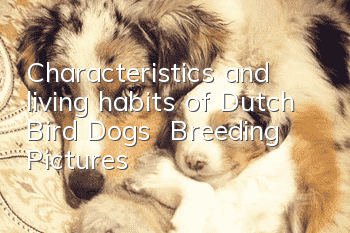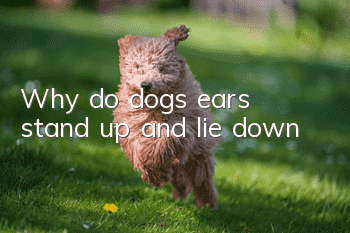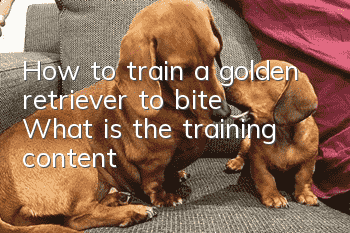Characteristics and living habits of Dutch Bird Dogs | Breeding | Pictures

The Dutch Bird Dog is a single hunting dog that originated in the Netherlands in the 17th century. Also known as: Dutch partridge hound, this dog may be a branch of the ancestors of today's spaniels and squat hounds. In the east of the Netherlands, especially in the province of Drenthe, these dogs are still of pure blood and have not been mixed with other foreign breeds as elsewhere. The most ideal dog breed for recreational hunting, often used for hunting pheasants, hares and partridges.
1. Dutch Bird Dog - Living Habits
The Dutch Bird Dog can point to prey. It will search within range and never stray too far from the hunter. It seems that it is very necessary for it to keep in touch with the hunter. When prey is spotted, it keeps a proper distance and often flicks its tail in a circle to signal the hunter to wait for the hunter to approach. If you wait a long time, it will come back to find its owner. It is also an excellent retrieval and search dog and can hunt on land and in water. It's born with these abilities, but it also requires a little training. Due to its docile personality, rough training would be a mistake for it.
2. Dutch Bird Dog-Characteristics
Size: The Dutch Bird Dog is 56-64cm tall and weighs about 23kg. The entire body structure is well-proportioned and shows strength and strength when walking.
Head: The skull of the head is broad and moderately arched. The nose is brown and the nostrils are wide open. A wedge-shaped snout with a blunt tip and a hooked nose are considered undesirable. Lips are thin and dry. The teeth are strong and bite closely. The eyes are oval, of good size, ideally amber in color, and have a friendly and intelligent expression. The ears are light, slightly high at the base, and droop close to the cheek. The outer edges of the ears are richly wavy and the inner edges are richly feathered.
Body: Neck of medium length and very powerful. It is better to have a short neck than a long neck. Although a long neck looks elegant, it lacks strength. The chest is deep and broad, the topline is smooth, the back is medium length and powerful. The waist is well muscled. Hips slope smoothly down. The forelimbs are straight and muscular, and the hind limbs are wide and muscular. Toes round, close together, slightly arched, and well padded. The tail is set high at the base, drooping when resting and held flat when walking.
Coat: The Dutch Bird Dog has a dense coat that covers the body tightly. The coat is not too long but gives the impression of long hair, because there are relatively long feathers on the ears, neck, chest, rear edges of limbs, feet and tail. Color is generally white with brown or white with orange patches or markings. Three colors are also allowed.
3. How to raise Dutch bird hunting dogs
(1) Diet
In the daily life of Dutch bird hunting dogs, the owner mainly provides dog food. The owner can appropriately provide some foods containing protein, carbohydrates, fats and other elements. Meat, vegetables, and broth are indispensable. Expired or spoiled food cannot be provided to dogsdog.
(2)Nursing
The coat of the Dutch Bird Dog is relatively long and very dense, so the owner should often help comb it to avoid tangles. Help with cleaning regularly, 1-2 times a month is best.
(3) Disease prevention
Every year, owners should take their dogs for vaccinations. In daily life, they should pay more attention to food hygiene, kennel hygiene, and cleanliness.
(4) Sports
Dogs are relatively lively animals, and adequate exercise is indispensable. The owner should take the dog out for walks frequently to ensure that the dog gets enough exercise.
4. Dutch Bird Dog Training Elements
(1) The best time to train a dog is when it is a puppy. Owners should start training from an early age and do not wait for the dog to develop a series of bad habits before starting training.
(2) The daily training time should not be too long, as too long will cause the dog to become tired of learning. Training 4-5 times a day, 5-8 minutes each time, will give you the best results.
(3) During training, owners can use some external objects to stimulate the dog’s desire to train.
(4) During training, the owner should treat the dog strictly and not be too pampering. If appropriate reward and punishment systems are provided, the effect will be better.
5. How much does a Dutch Bird Dog cost?
The price of Dutch bird hunting dogs is relatively flexible, and the prices of dogs in different regions, sizes, breeds, and genders are different. The general price is between 800-3600, and puppies are much cheaper. Of course, dogs can also be adopted, and adoption is generally free of charge.
Guess you like it
Black wolfdog, Cane Corso, golden retriever, Samoyed dog, British bulldog
- What is the best medicine for Annatto Sheepdog’s kennel cough?
- Things to note when raising a Chinese Shar-Pei
- Understand these misunderstandings about raising a dog and avoid stepping on them!
- What should I do if my dog is anorexic and won’t eat? What medicine should I take?
- Can dermatitis used for humans be used on dogs?
- Is it okay if my dog drinks a little wine?
- How to teach a dog to use the dog toilet?
- Can dogs eat ice cream?
- What happens when a cat vomits after eating? What should you do if a cat vomits?
- Australian Shepherd personality traits



